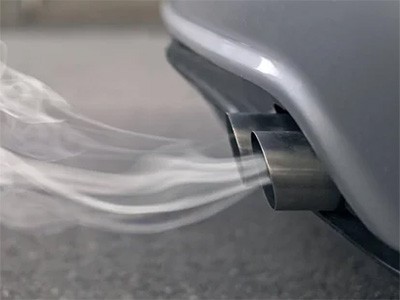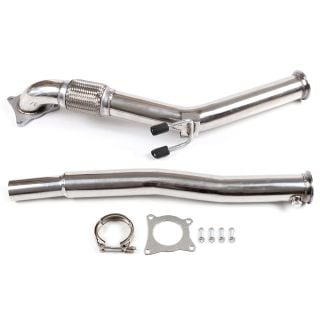Modern vehicles shouldn't be putting out smoke from exhaust pipes when they're running properly. When you notice smoke coming out of your vehicle, it doesn't necessarily indicate a serious problem, but it's usually something you need to check. You can start by simply identifying the color of the smoke. White smoke comes from the mixing of water with the exhaust or combustion cycle. Blue smoke means oil is mixed in. Black smoke means you are "running rich", or having too much fuel in the combustion cycle. Below is a breakdown of what each color of smoke might mean for your vehicle.
White smoke
If you see white smoke when starting the engine, you need to let the car warm up to gather more information about any potential issues. If you let your vehicle's engine warm up and the smoke stops, it's most likely just steam. This is normal and will go away while you are driving. If it still has white smoke, you need to stop and check the coolant level. If it's low, there may be a serious problem, but more testing is needed. Fill up the tank and drive normally for a day or so. Then, check the coolant level again. If it's not low then there's no problem. However, if the levels drop significantly again, your cylinder head gasket is faulty and needs to be replaced.

Blue smoke
Finding the faulty component when there is oil in the combustion cycle can be a bit tricky but still doable for most drivers. Your first choice is to replace the PCV valve, which allows gases to move from the crankcase of the internal combustion engine to the intake manifold. Replacing it is usually a quick job. Once done, check if the blue smoke is still present. If not, you have resolved the problem. If the exhaust pipe continues to emit blue smoke, the next step depends on whether your car is equipped with a turbocharger. For turbocharged cars, you can remove the intake pipe and check for oil. Oil in this tube signals that oil seals have failed and the turbo needs to be replaced. If the car is not turbocharged or there is no oil in the intake pipe, the problem may lie with the engine's oil seals.
Black smoke
For black smoke emanating from the exhaust pipe, it usually requires a visit to an auto shop for inspection and adjustments. Similar to the investigation process for white smoke, you need to let your car warm up first. If the black smoke stops once the car gets hot, there may not be a major issue, but it's still advisable to have it checked. If the smoke persists, replacing the spark plugs can solve the problem. If it's not the spark plugs, the issue may lie somewhere in the fuel system. Specifically, it could be a problem with the mass airflow sensor, fuel injectors, fuel return pipe, or fuel pressure regulator.












